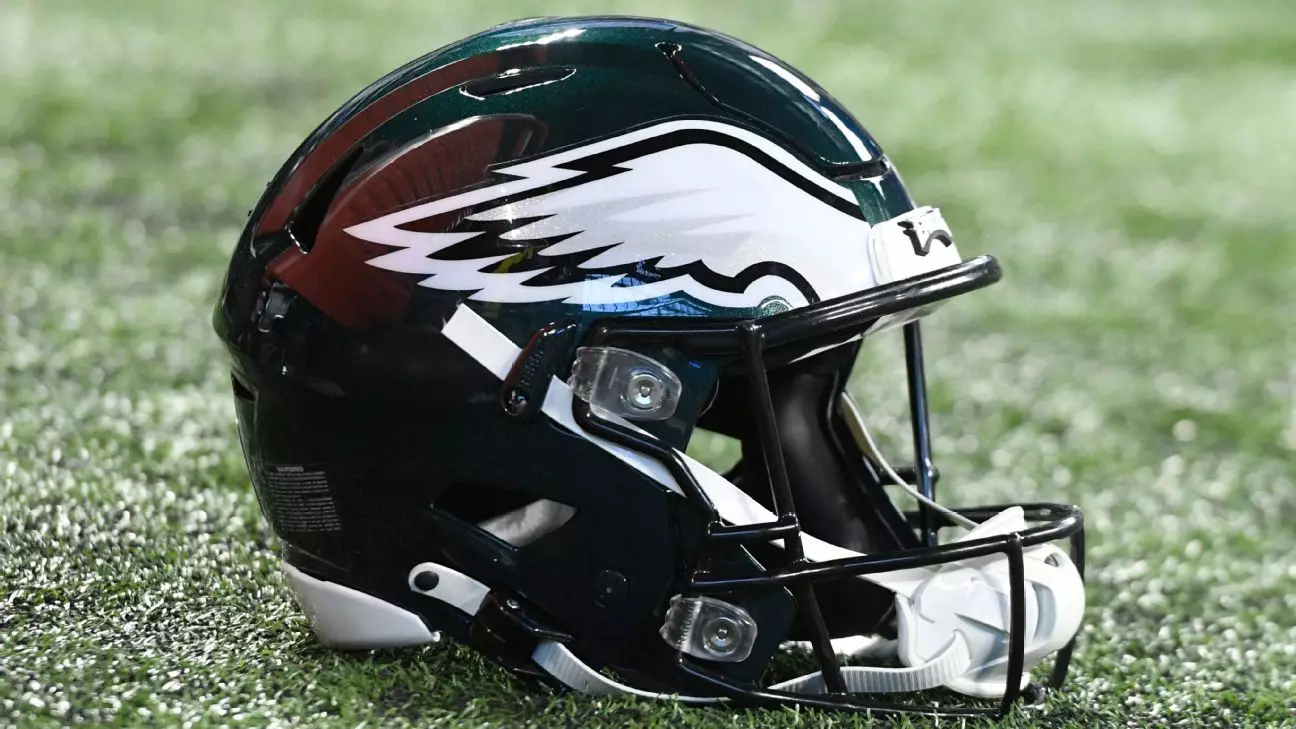In an NFL landscape where every roster move signals a team’s strategic vision, the Las Vegas Raiders and Philadelphia Eagles exemplify this reality with their recent transaction. The Raiders’ decision to trade cornerback Jakorian Bennett to the Eagles in exchange for defensive tackle Thomas Booker IV is not just a routine swap; it is a calculated effort to bolster their defensive front and adapt to the shifting dynamics of the league. This trade underscores a broader trend in the NFL—teams seeking versatility, youth, and depth to outmaneuver opponents and secure playoff positioning.
Bennett, a promising fourth-round pick in 2023, has shown flashes of potential but struggled to solidify his spot amid a crowded cornerback room. His ability to perform despite injuries demonstrated resilience, yet he found himself relegated to second and third-team reps, signaling a defensive unit in flux. On the flip side, acquiring Booker, a quirky but athletic interior lineman, reflects an aggressive approach by the Raiders to reinforce their defensive tackle rotation. Booker’s modest production—18 tackles and a sack in 17 games with the Eagles—may seem unremarkable at first glance, but his presence adds much-needed depth, particularly amid Christian Wilkins’ injury recovery.
Meanwhile, the Eagles’ departure of Darius Slay marks a significant shift in their defensive philosophy. With the veteran corner gone, the team faces a pressing need to find consistency on the outside. The competition between Adoree’ Jackson, Kelee Ringo, and a group of young, unproven talents embodies the challenge facing Philadelphia’s defensive coaching staff. As Vic Fangio noted, the cornerback battle remains “close,” indicative of a defensive unit that prioritizes flexibility and competition—a hallmark of successful NFL defenses.
Young Talent and Veteran Experience Collide: Building for Long-Term Success
The trade exemplifies an overarching NFL trend where franchises pivot towards younger, more athletic players with high upside. Bennett, at just 24, still has the potential to develop into a starting-caliber cornerback, especially given his prior injury setback and subsequent recovery. His quote about feeling healthier than ever signals a renewed confidence, but his drop in reps reflects the brutal reality of NFL competition—performance is non-negotiable.
In contrast, Booker’s journey from a practice squad member to a rotational interior lineman epitomizes the importance of perseverance and adaptability in the league. His limited starting experience might raise eyebrows, but NFL teams often value depth and the ability to step in during critical moments. For the Raiders, securing a player like Booker provides a reliable option to fill gaps left by injuries or performance dips, ensuring defensive consistency.
Philadelphia’s pursuit of coverage stability in the secondary reveals an organizational emphasis on youth and athleticism. The ongoing quarterback competition involving Jackson, Ringo, and others can be seen as a microcosm of the Eagles’ broader strategy—building a defense that can withstand passing threats in an increasingly pass-heavy league. Fangio’s acknowledgment of the competition’s closeness suggests that the team is leaving no stone unturned—a sign of a coaching staff confident in their adaptive approach.
The Big Picture: What These Moves Say About NFL Team Strategies
The Raiders and Eagles’ respective transactions are more than mere roster adjustments; they are tactical moves aimed at aligning personnel with their long-term visions. For Las Vegas, the focus appears to be on building a resilient, multi-dimensional defense capable of adapting to opponents’ offensive schemes. The trade signifies a preference for young, versatile players who can be molded into key contributors over time.
Philadelphia, on the other hand, is emphasizing the importance of competition and internal development to foster a culture of excellence. The uncertainty surrounding their cornerback positions demonstrates a willingness to invest in the developmental process rather than settling for immediate but possibly unstable solutions. This approach, while risky, could yield dividends if their young talents rise to the occasion.
In essence, these trades reflect NFL teams’ understanding that success hinges not solely on star power but also on intelligent depth-building, adaptability, and continuous competition. The NFL’s competitive landscape is unforgiving—those who can blend experience with raw potential often find the edge needed to succeed in late-season battles.
As the season unfolds, the impact of these decisions will become clearer. Will Bennett prove his doubters wrong and ascend the depth chart? Can Booker carve out a more prominent role and provide the Raiders with stability on the inside? Will Philadelphia’s secondary cohesion lead to a dominant pass defense?
These questions hang in the air, underscoring the strategic chess match that is NFL roster management. It is a game of inches, where bold moves like these can reshape a team’s destiny and redefine their standing in the fiercely competitive league.


Leave a Reply